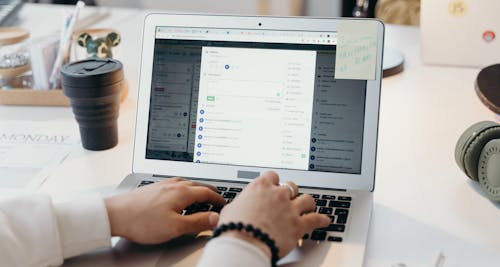
Photo Credit: pexels.com
When we think about client engagement, we often jump to the big stuff: meaningful conversations, responsive partnership, delivering on what we promised (and then some). And yes—those things matter. But one of the most powerful ways to build trust, strengthen relationships, and sustain momentum isn’t flashy at all—it’s follow-up.
Not the automated kind. Not the “just circling back” emails that feel more like reminders than relationships. I’m talking about thoughtful, well-timed, relevant follow-up—the kind that shows you’re paying attention, that you care, and that you’re committed to walking alongside your clients, not just checking a box. Because ultimately, follow-up isn’t just about keeping things on track—it’s about staying connected.
As Director of Client Engagement at Event Garde, a large part of my role is serving as the liaison between our clients and our consulting team. That means I’m involved from the initial inquiry through finalizing the agreement and managing the project as the work progresses. And I’ve learned this: consistent follow-up builds confidence.
When clients know they can count on you to follow through—whether it’s sending that resource you mentioned, checking in ahead of an upcoming session, or offering a gentle nudge when things have stalled—it builds trust. Not only does it keep the work moving forward, but it also signals that the work is important, and so are they.
Great follow-up is both relational and strategic—it’s not just about “touching base”. It’s about adding value and showing that you’re tuned in to where they are right now. That often looks like:
- Sending a quick recap after an introductory call. This could include a summary of key points and any resources or materials you committed to sharing.
- Checking in ahead of an upcoming session. A quick note to check on shifting priorities or lingering questions can go a long way in aligning expectations.
- Reaching out during a lull. Not to apply pressure, but to offer support, flexibility, or a reminder that you're still here and invested.
- Celebrating a milestone or acknowledging a tough decision. Recognizing effort—big or small—reinforces momentum and mutual respect.
Timing and tone matter. The best follow-up respects people’s pace and preferences. It might be quick and actionable or warm and reflective. Sometimes it's immediate; other times, it's better to wait a few days to let things breathe. Knowing when to press and when to pause is an underrated skill in itself.
Here are a few follow-up practices that work for me:
- Build it into the process. We intentionally create space in our timelines for meaningful check-ins—not just around big milestones.
- Make it personal. Refer to a specific insight, moment, or challenge. Let people know you’re listening.
- Offer choice. Instead of “let’s schedule a call,” I might say, “I’m happy to talk this through in more detail if that would be helpful.”
- Close with clarity. Even when there’s no urgent action needed, I try to make the next step clear—or confirm that we’re pausing with intention.
At its core, follow-up is a signal of care.
It says: I’m still here. I’m paying attention. This work matters to me, too. And in a world that moves fast, that kind of attention stands out.
So, if you’re looking to strengthen your client engagement strategy, start here. Not with a big campaign. Not with new systems. But with a well-timed check-in, a thoughtful message, or a simple note that says, “This is still on my mind, and I’m here when you’re ready.” Sometimes, that’s all it takes to turn a project into a partnership—and a client into a collaborator. Because, in the end, trust is built on follow-through.


